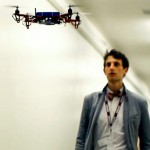The post How Would Your Photography Change if you Couldn’t use any Auto Functions on Your Camera? appeared first on Digital Photography School. It was authored by Kevin Landwer-Johan.

What if your digital camera had no auto exposure ability? How would you manage? Do you think you’d adapt and learn to make good and creative exposures? I’m sure you would. And you’d enjoy your photography a lot more once you realize it’s not so difficult.
Learn to control your exposures in Manual Mode
I learned on a camera with no auto modes. It was completely mechanical. It only required a battery for the simple exposure meter. My Nikkormat FTN, however, was a film camera, so I had no monitor with which to preview or review photos. There was also no metadata recorded to help me understand the exposure choices I was making. I had to write my settings in a notebook.

© Kevin Landwer-Johan
How much do you rely on any of the auto exposure modes? When you’re learning how to use your camera these modes are helpful. They allow you to capture photographs easily. Not having to think about exposure settings can free you up to pay more attention to other aspects of picture taking.
You can better achieve composition, timing, and relating to your subject when using an auto mode. But what if you didn’t have this option? Do you think you’d learn to manage to set your exposures by yourself, only with the help of a built-in light meter? I think you would.

© Kevin Landwer-Johan
Once you commit to understanding light and exposure, making manual adjustments is not so difficult. You can become more accurate with them over time. If you are only sometimes bold to use manual settings, you’ll take a very long time to master them, if you can at all.
To be successful at using manual exposure mode you must commit to learning how it works. You need to have an understanding of light and how your camera records different tone values. Using manual mode does require you to slow down at first. But once you’re practiced, you’ll become faster and more accurate.

© Kevin Landwer-Johan
Discipline is required to learn to photograph in Manual Mode
Learning any creative artform requires discipline. If you want to paint or sculpt you must spend time studying. Making ceramics or wood carving takes time and practice. When learning to play a musical instrument, you must go over and over the basics many times.
Most kids don’t like playing scales ad nauseam when learning a musical instrument. But they are foundational and so beneficial in helping a young musician grow and understand their craft. Photographers are rarely so disciplined.

© Kevin Landwer-Johan
Taking time to practice the essential functions of your camera will allow you to become more proficient. If you are relying on the built-in artificial intelligence, you will often struggle to reach your full creative potential.
By making a point of frequently using manual mode, you’ll be on a journey towards a deeper creative expression. But you have to be disciplined to make it most effective.
Many people who enroll in my photography workshops tell me they use their cameras in an auto mode. They admit to occasional manual use. I encourage them that unless they commit to using it, manual mode will remain difficult.

© Kevin Landwer-Johan
Slow down and feel the freedom
Often, photographers who prefer using an auto mode express their concern for missing the moment if they are using manual mode. I appreciate this as a genuine concern. However, you can’t always catch great photos on the spur of the moment. They take planning and patience.
Taking time to learn manual mode will also help you develop what you want to photograph. You will look at the world around you in different ways. You will begin to anticipate more when you choose to take photographs, rather than looking for snapshots.

© Kevin Landwer-Johan
Every genre of photography requires patience on the part of the people with the cameras. Whether your photographing landscapes, sports or birds, it’s best if you are not in a hurry. Take the time to study your subject. Know your camera well and how you can control it. Be most familiar with it, and observe and predict when the best opportunity for a photograph will happen.
Landscape photographers can wait for months for the right conditions. Sports photographers must develop lightning-fast reflexes. But these take time to perfect. They are developed with the study of the game and frequent practice photographing it.

© Kevin Landwer-Johan
Practice often
The more often you practice anything, the better you will become.
Many years ago, I had accreditation to photograph the world cup cricket matches played in Auckland, New Zealand. I was working for a newspaper back then. I had no experience with cricket, other than watching some matches on TV. I turned up on the morning of the first match with my camera fitted with a 2X converter and a 400mm lens.
That day, I hardly managed to capture a single frame with the ball in it. I felt disheartened. I did realize, though, that I had lots of opportunities to practice. Over the next month that the tournament played out, I improved. Each match managed a higher percentage of good photos.
I started with what was simplest – the batsman swinging at and, hopefully, striking the ball. These were not the most impressive photos to aim for, but it was a good place to start. I was envious when I saw the published pictures of more experienced photographers. They showed more dynamic action. However, as I became used to working in the environment with an 800mm focal length, I was able to capture more interesting photos.
I focussed manually, due to using the 2X converter. My exposures were also manually controlled. But this was not so challenging when the light was constant. The repetitive action allowed me to grow used to the flow of the game. I became better at predicting when the best photo opportunities were.

© Kevin Landwer-Johan
Explore and experiment with your photography
If you can discipline yourself to use manual mode and practice photographing the same subject material over and over, you’ll improve. Once you are more confident using manual exposure settings, you’ll become faster.
Doing the same routine many times, you’ll build up your ability to understand your camera. You can reach a level of competence where you make good exposure changes without being fully conscious of your actions.
When the light changes, you will be more aware of it. You will change your aperture or shutter speed a few clicks without having to check your exposure meter. Once you are doing this, you’ll be able to give more of your attention to other aspects of taking photos.
Difficult lighting conditions will no longer be so challenging. Many people who prefer to use auto exposure settings don’t like taking photos in the middle of the day. Especially when the sun is out. Learning to control your camera will help you see the light and make your exposures to manage well in these conditions.

© Kevin Landwer-Johan
I took this photo at around 2 pm on a sunny day and tweaked it only slightly during post-processing. The basic light and dark effect was created when I took the photo. Being able to see when the light is right and control your camera gives you more freedom. You will be able to create better photographs.
Conclusion
I know there will always be photographers who prefer to stick to using auto modes. The most common argument is using exposure compensation to override the camera’s choice. I always think if you are taking this extra step, you may as well be using manual mode.

© Kevin Landwer-Johan
I know from experience, learning on a camera with no auto exposure options helped me to understand more about light. It also meant I had to learn the relationships between the exposure settings. I was responsible for getting it right and making my photos look the way I wanted them to.
If you discipline yourself to use your camera in manual mode, you will have a far easier time learning than I did. With digital cameras, you have the advantage of being able to preview and review your photos in real-time. You also have tools like the histogram, highlight indicators, and spot metering. These all make it easier to capture well-exposed photos in manual mode.
The post How Would Your Photography Change if you Couldn’t use any Auto Functions on Your Camera? appeared first on Digital Photography School. It was authored by Kevin Landwer-Johan.

Digital Photography School

































You must be logged in to post a comment.